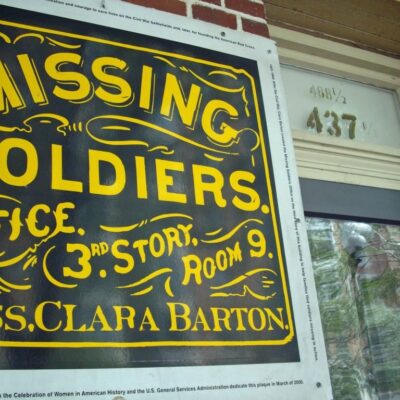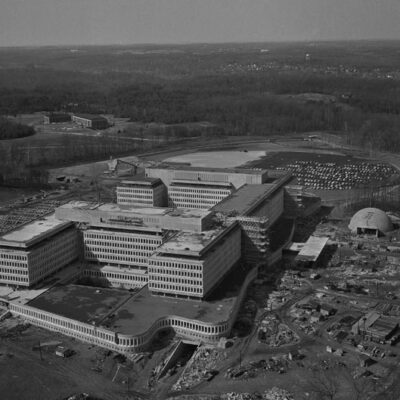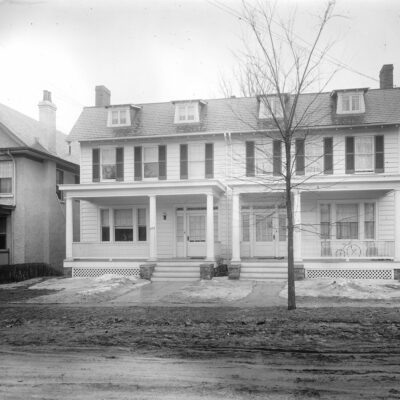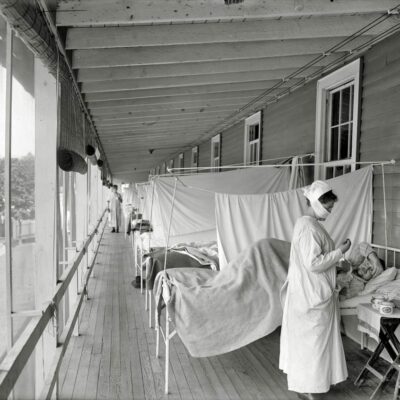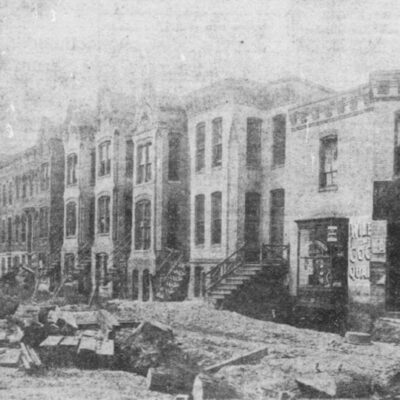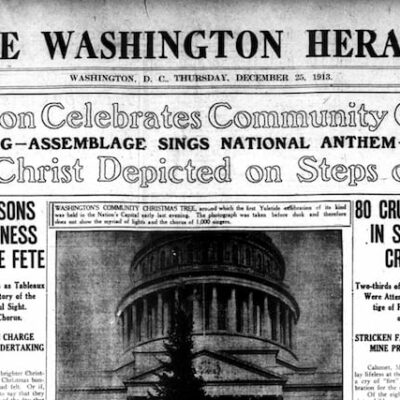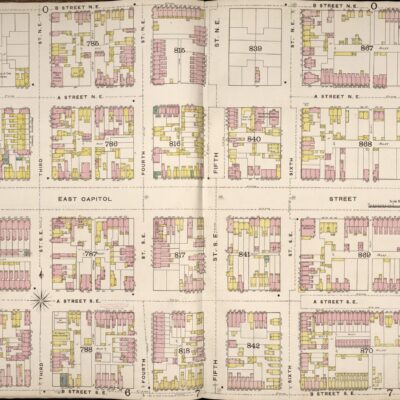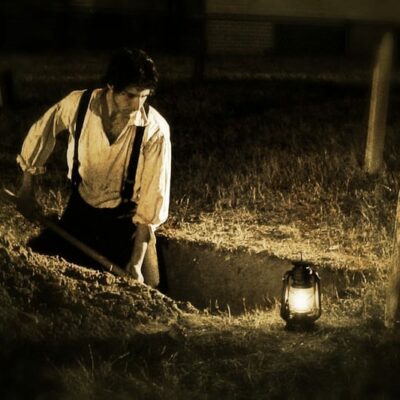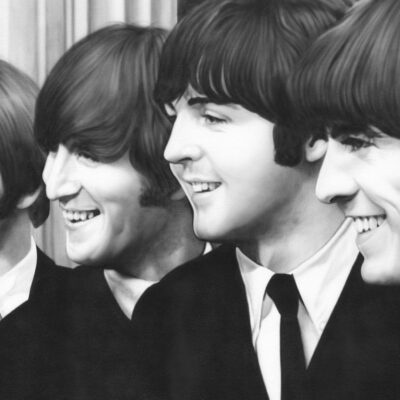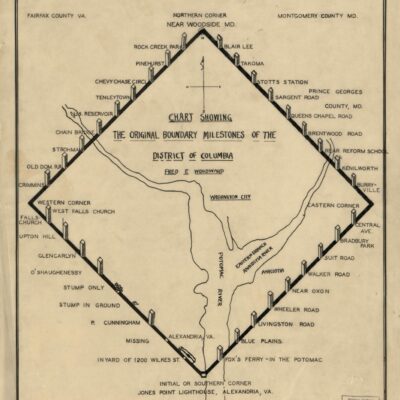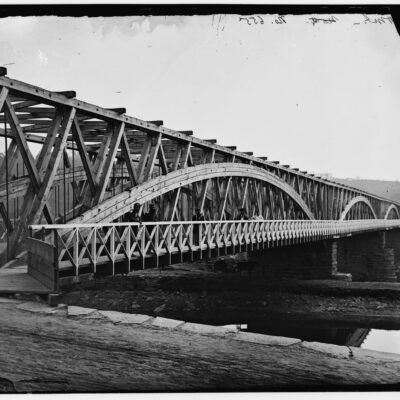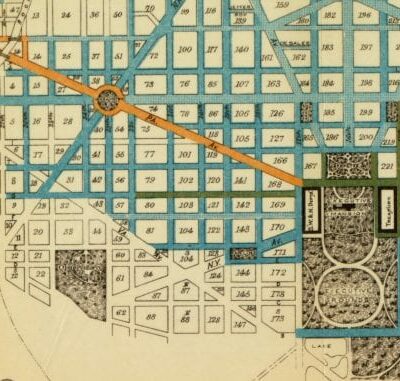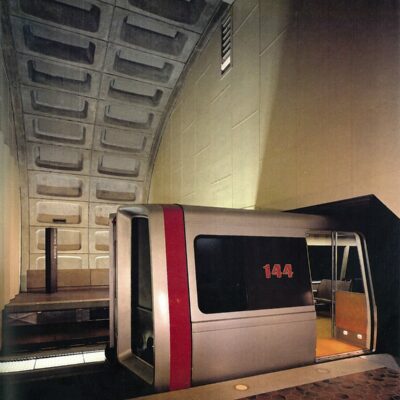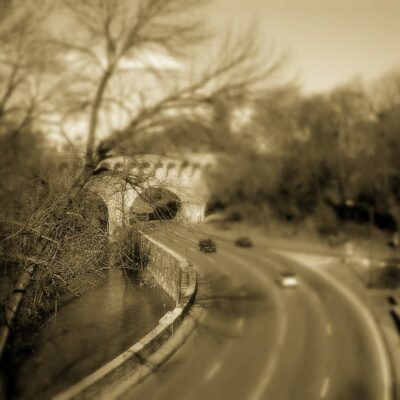Our neighborhoods don’t have quite the colorful names of yesteryear. Much like Murder Bay, Hell’s Bottom was a seriously dangerous place to live, or even walk through. It was not the beat you wanted as a policeman.
There is a delicious local beer, which takes its name from the notorious neighborhood (evidently inspired by our friend and GoDCer, Kim). So, we’d like to share a few more untold historical stories from the neighborhood.
Enjoy the ones we dug up below … three tales from Hell’s Bottom.
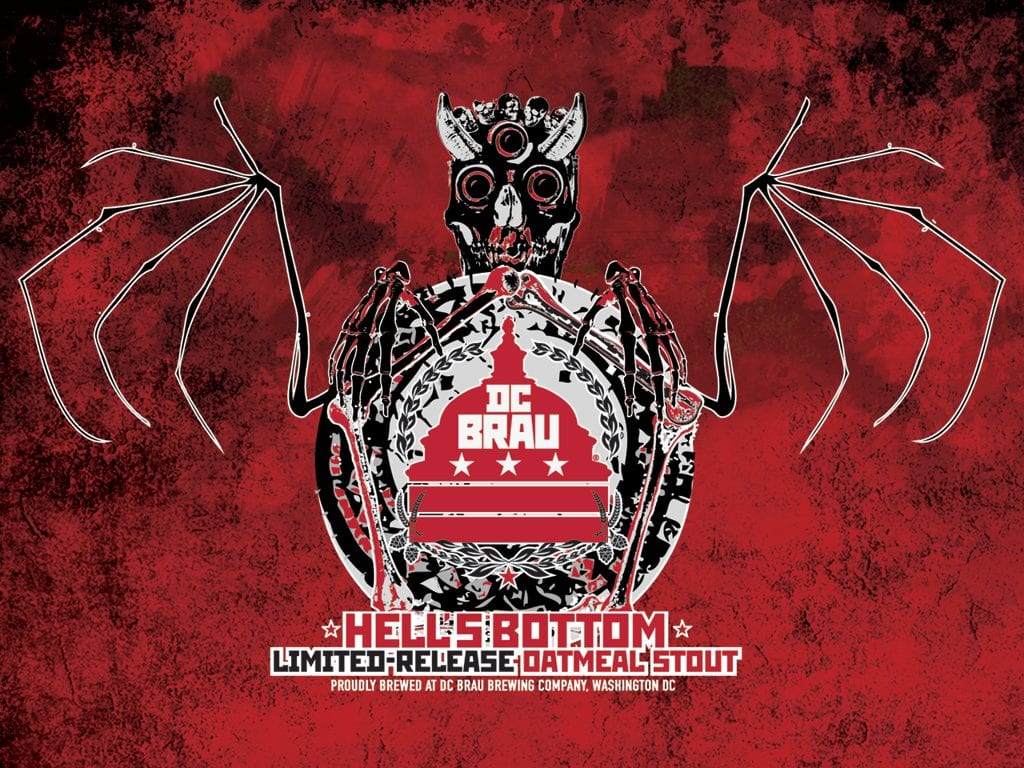
Oh, one more thing for the guys at DC Brau. Ghosts of DC loves DC Brau beer (“we” are having one right now). GoDC would be more than happy to serve as inspiration for the next special brau ;-).
1. The killing of Officer Crippen
The Washington correspondent for the Baltimore Sun wrote the following story, published on November 7th, 1889 about a chase and fatal shooting in the notorious Hell’s Bottom neighborhood.
WASHINGTON, Nov. 6.–Three men are dead today in consequence of the affray in a part of the city called Hell’s Bottom, in the northern section of the city, referred to in The Sun this morning. Osborne Busey, a negro, was wounded by another negro, George Bush, who ran, but was pursued by Officer A. N. Crippen, who shot at him. The negro Bush took refuge in Bob Brown’s saloon, on Twelfth and Q streets northwest, and ran upstairs, saying he would kill any policeman who followed him. Officer Crippen was not daunted, but followed Bush upstairs where Bush fired at him, and Officer Crippen returned the fire until he fell dead, leaving Bush mortally wounded and speechless. The officer’s body was taken off in a patrol wagon and the wounded negroes carried to the hospital, where Busey died at 8 o’clock this morning and Bush was a corpse at 8 o’clock. Both had bad reputations. As all the parties to the tragedy are dead the coroner gave burial certificates without an inquest. No braver officer ever lived than officer Crippen. He came here from Dranesville, Va., in 1877. He had a wife, but no children.
Bob Brown’s saloon was an the northwest corner of 12th and Q St. NW, in the little triangle formed by Vermont Ave. You can see it below in the 1888 map of the intersection. It’s the yellow structure labeled “Sal. S.”
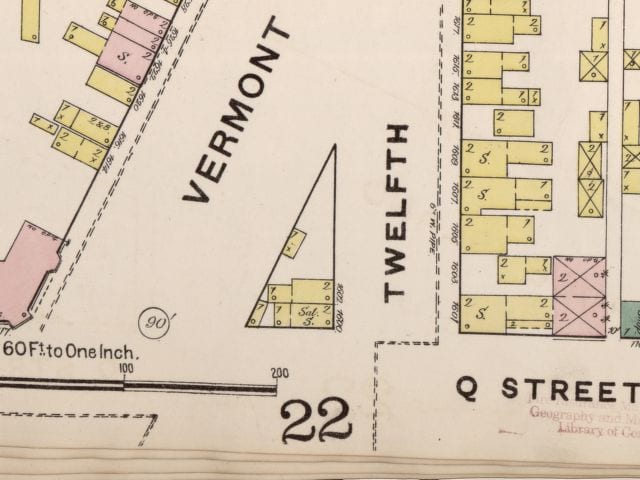
2. A female lamplighter
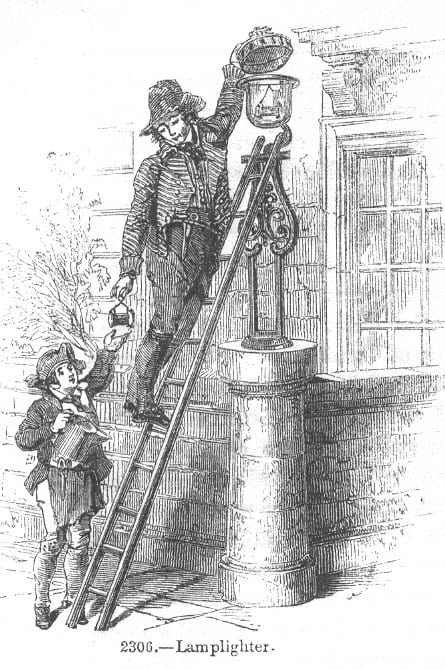
It was quite rare for women to have any occupation in the 1880s, let alone that of lamplighter. Now, throw on top of that the responsibility for the crime-ridden district known as Hell’s Bottom, and you have the makings of fascinating story. Below is an article from the Washington Post on October 13th, 1881, detailing the professional exploits of Washington’s woman lamplighter.
Washington possesses what no other city, perhaps, in the United States does, a woman lamplighter. Her name is Mrs. Welsh. She is of Irish extraction, and is represented as a busy, bustling little woman of about forty years of age. Her district is situated in what is known as hell’s Bottom, one of the worst sections of the city, and through this section, at all hours of the night, Mrs. Welsch may be seen hastening from lamp-post to lamp-post, either lighting or extinguishing. She does not use a ladder, but runs up the post with the agility of a squirrel. On the darkest nights she penetrates the inmost recesses of the alleys with a bravery that knows no fear. The lamps along her route are lighted with the utmost regularity and extinguished with equal promptness. In fact, she may be regarded as the model lamplighter of the city. Her husband is now in jail, serving out a sentence for an offense which his Irish impetuosity led him into, and to retain the position in the family the little woman assumed to take her husband’s place and do his work. In striking contrast with this case is that of a six-foot man who has charge of a certain district, and who whistles vigorously while extinguishing the lamps that are in secluded spots, for the purpose, it is said, of keeping up his courage.
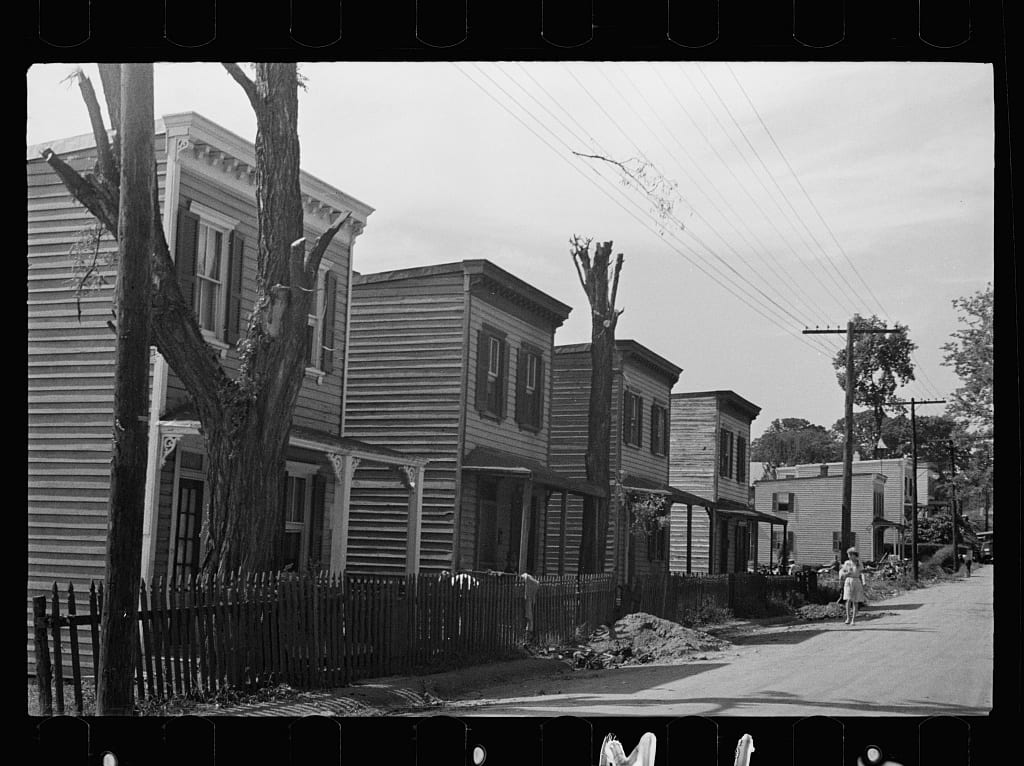
3. Wretched homes condemned by health department
Hell’s Bottom sounds like the worst of the worst places to live. Descriptions of daily life in abject poverty, with a complete lack of sanitation or safety, gives the impression of a bleak existence.
Below is one of the more incredible descriptions we came across. This is an article from August 12th, 1879 in the Washington Post.
… Notices were served on a number of the owners of these places some time since to have them vacated, or the sanitary condition changed, but when it was found that, as a rule, no rent was collected, it was resolved to proceed directly against the occupiers, the owners not being willing to go to the expenses involved in ejectment suits. The usual abatement or condemnation notices were therefore served on the miserable squatters, for such, in most cases, they practically are. Yesterday twenty-six of these expired in the locality known as “Hell’s Bottom,” a former contraband camp, situated in the northwest portion of the city, and extending, irregularly, from Seventh to Fourteenth streets, and from O street to the Boundary. Fourteen of the dens are on Eleventh street between P and Q streets, and eight on P between Tenth and Eleventh streets. The tenants have been removing rapidly for the last day or two, and only a few needed the pressure of the police yesterday when the time expired and the doors were ordered to be nailed up. They moved to other shanties in the localty [sic], not hitherto under the ban, but which, from their new accession of inhabitants, probably soon will become so. The only permanent remedy, no doubt, lies in the erection of cheap places where the nature of the sanitary provisions will tempt a certain amount of cleanliness for very laziness sake. The present places are of the rudest possible construction, few having any sashes in the window aperture, a board shutter closing out the cold winds, light and ventilation together, when shut. The only salvation from suffocation lies in the gaping cracks existing round the doors and windows, without which many a family would doubtless be found dead in the mornings of cold nights. For warmth in winter all the denizens are forced to lie huddled up together, irrespective of age or sex, and all sense of modesty or morality is lost, long before maturity, in both sexes. A locality thought to compare unfavorably even with Hell’s Bottom is situated on the square bounded by Vermont avenue, Q, Twelfth, and Thirteenth streets. Notices have been served on fourteen of the worst cases there, and they too have commenced to pack less crowded localities in the same way as those already mentioned. All the vacant shanties are to be thoroughly cleansed and disenfected [sic], and will then probably be condemned by the building inspector as dangerous to life and limb.
Surely everyone in the GoDC community finds this as shocking as we do. The area discussed above is where people are buying up condos for $500,000 and more. As described in the article, it sounds like an unbelievably unhealthy and dangerous shanty town, the likes of which you only see in third-world countries today.
